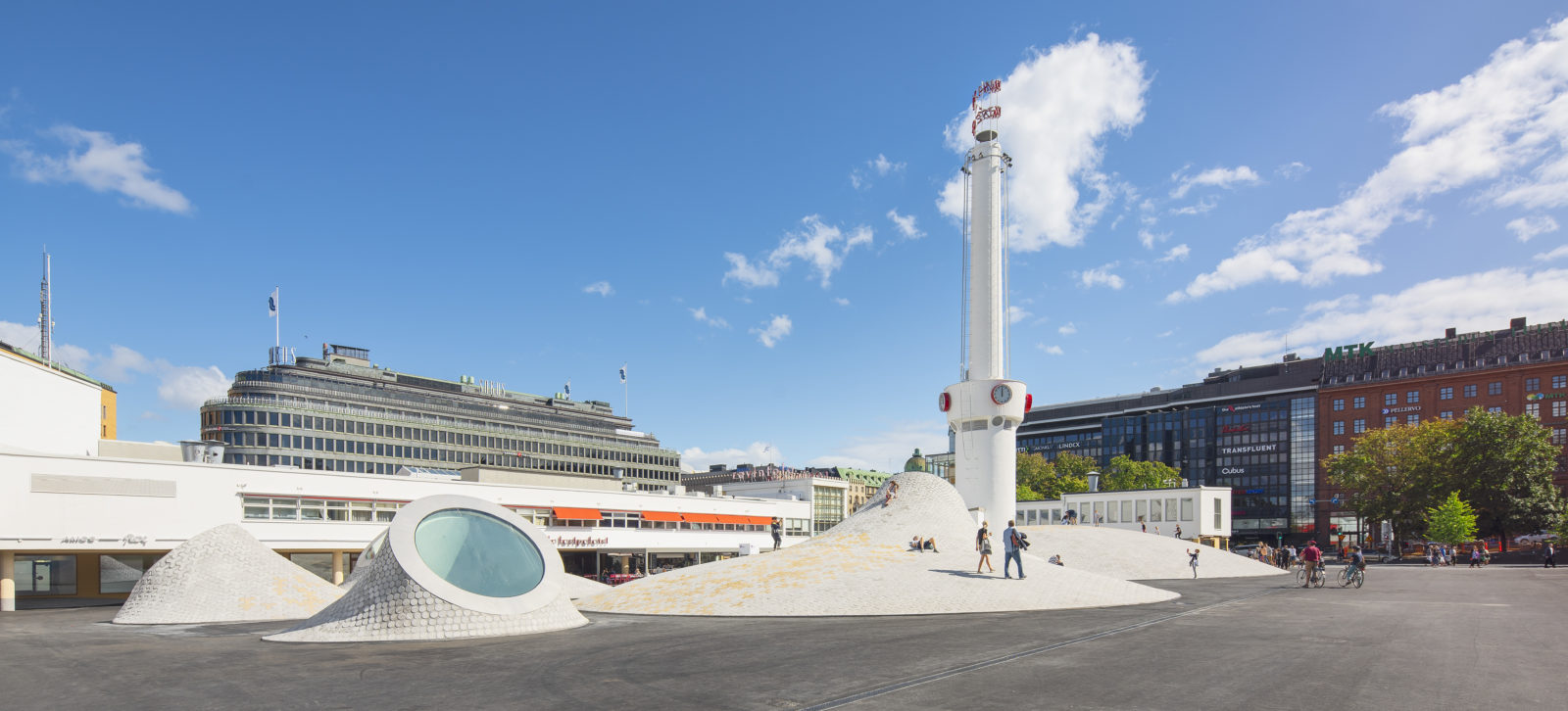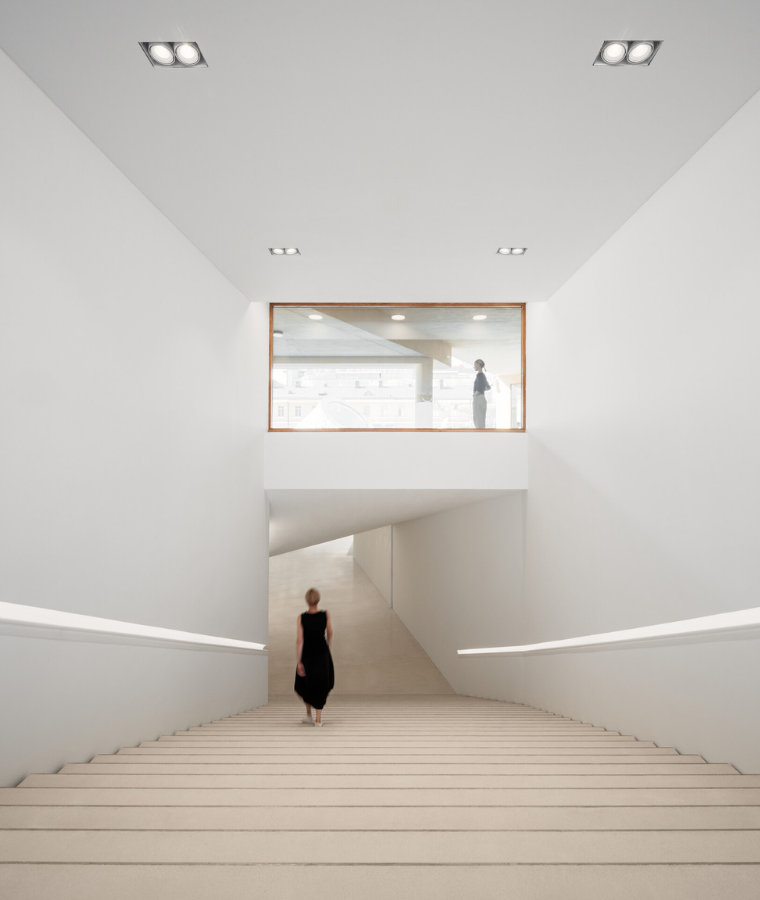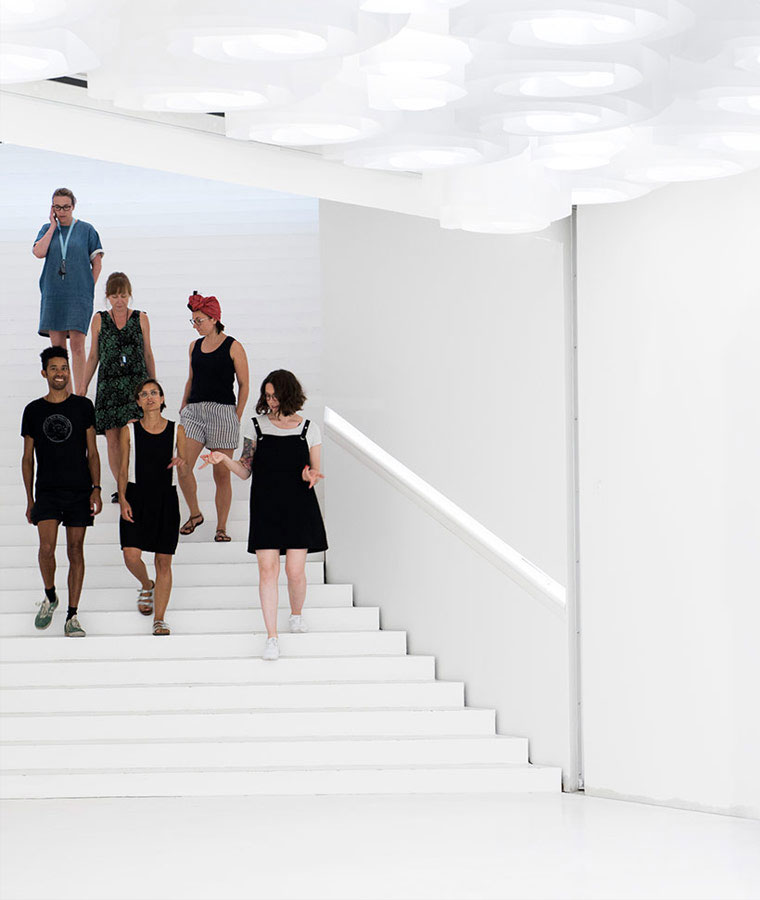For teachers

For teachers
Dear teacher/instructor! Looking for services for your group? Here you can find information on our guided tours, exercises for independent visits, and details on art workshops for deepening the exhibition experience.
Welcome to Amos Rex!
You can use the form below to subscribe to our mailing list for schools, so you’ll be among the first to know about programmes designed for schools and informational events for teachers. The newsletter is in Finnish.
P.S. We want to make Amos Rex a great place for school groups to visit, to create memorable experiences for pupils and support teachers in their work. We welcome all feedback – please send it to us via email at museum@amosrex.fi Thank you! <3

Larissa Sansour
9 October 2024 – 2 March 2025
In autumn 2024, Amos Rex will host an immersive exhibition by Palestinian-Danish artist Larissa Sansour, where the past and possible futures meet. Her video works and installations use for example sci-fi, opera and other experimental narrative and visual strategies to interweave current issues and imaginary worlds. The exhibition features seven artworks from 2009-2022 and is the most comprehensive presentation of Sansour’s art in Finland to date. Fostering both insight and compassion, most of the featured works have been created in close collaboration with Danish writer and director Søren Lind. We recommend the Larissa Sansour -exhibition primarily for pupils in lower secondary school and older.
Before your visit
Ou, Amos Rex’s mascot for children, gives tips for how to look at video art:
On the spot / after your visit
Themes of grief and loss are notably present in Sansour’s exhibition, and your group might require a bit of time to take in the experience. If there is not enough time for discussion on the spot, we recommend that you ask the group to take a few notes before leaving the museum, either on the phone or on paper (for example, five words or feelings that the exhibition evoked). These notes can then serve as a starting point for further discussion in the classroom. Here are five tips that might be helpful during your visit, either on the spot or afterwards:
Consider the groups’ backgrounds
What kinds of backgrounds do your pupils come from? Listen to their needs – do they want to share personal experiences and knowledge with the rest of the group, or would they rather keep it to themselves?
Accepting emotions and putting them into words
Feelings come in all forms and shapes, and none of them are wrong or right. Feelings simply are, they arise and pass away in a constant flow. Some of us react more readily to what we see and hear. If you notice that your group needs support during the exhibition visit, encourage them to put their feelings into words, either each to oneself or together as a group. You can also point out that Larissa Sansour is constantly looking to the future and uses her art to reflect on possible future scenarios.
Clarity
In general, information comes as a relief to children and youths. Saying nothing can make them think things are worse than they are, or that they are not to be talked about.
Encourage your group to share what they already know about the topics in question, each to one’s own capability and comfort. The importance of information is however greater for youths, who generally need more mutual reflection together with adults.
Everyday life goes on
You can tell your group that many wise adults around the world are working very hard to restore peace. Everyday life goes on, and children and youth do not have to feel guilty about doing things that make them happy.
Compiled using materials from the Mannerheim League for Child Welfare, Save the Children Finland, Pikkujätti and psychotherapist Maaret Kallio’s website.
After your visit
Sansour’s art raises questions about belonging, the construction of reality and asymmetrical power relations as they play out in the writing of history. The exhibition thus offers excellent input for further reflection on media literacy.
You can continue to delve into the historical and contemporary events highlighted by the exhibition, such as the situation in Palestine. Consider how you as a group could gather more information and what source criticism means. Which sources of information are already familiar to the group? What kind of information does each source provide, and who produces it? Could a work of art be a source of information?
Studio Rex: Futures School
What does a desirable future feel like: soft or spikey, shiny or crinkly? And what does an undesirable future look like – what colour or shape is it?
Big and even quite small choices in life shape the future, but it is also affected by creativity, i.e. the ability to imagine and try out new things.
The Children and Youth Foundation’s Futures School and Amos Rex invite you on a journey of discovery into alternative futures, expanding your ability to imagine better futures. In the art workshop created in collaboration with Amos Rex, you too can challenge your own creativity and construct imaginary scenes about the future – your own or the world’s. In art you are free to explore all kinds of ideas and feelings, and there are no right or wrong answers.
You can book a guided art workshop with the Futures School. If there are no reservations at Studio Rex, the space and its workstations are open to all.
More about the Futures School: tulevaisuuskoulu.fi

Breathe – You Know
comic book
In spring 2024, Amos Rex published a comic book for teens (12+), in collaboration with the Finnish Literature Society (SKS Kirjat). It tells the story of two 14-year-olds’ attempt to find their friend’s artwork, and survive, in a strange museum. The book is illustrated by Ulla Donner and can be used in art education. Teachers get 15% discount on the book in the museum shop with their OAJ union card.
Off to Amos Rex online shop:
For Groups
Museum rules
These rules exist so that both the artworks and the visitors can enjoy the museum. The mission of art museums is to present valuable artworks to the delight of people in a way that ensures their survival for the future too!
- No drinks, backpacks or large bags are allowed in the exhibition space.
Even just a single spilled drop of fluid can ruin an artwork. Large bags and backpacks, on the other hand, can scratch the works if in contact with them by accident. - Please take photos, but without flash.
The works are sensitive to light, and for example drawings and paintings fade in the light. - Works should not be touched unless otherwise mentioned.
They may be damaged or become dirty, or move away from their original position. - Please consider other groups during your visit.
If you are visiting without a guide, please make space for guided groups in the exhibition space. - The teacher is responsible for the group during the visit.
Remember also
- Unfortunately, the museum does not have a separate space for eating snacks. If the weather permits, we recommend a snack break on the domes of the museum courtyard! There are also cafés next to the museum.



